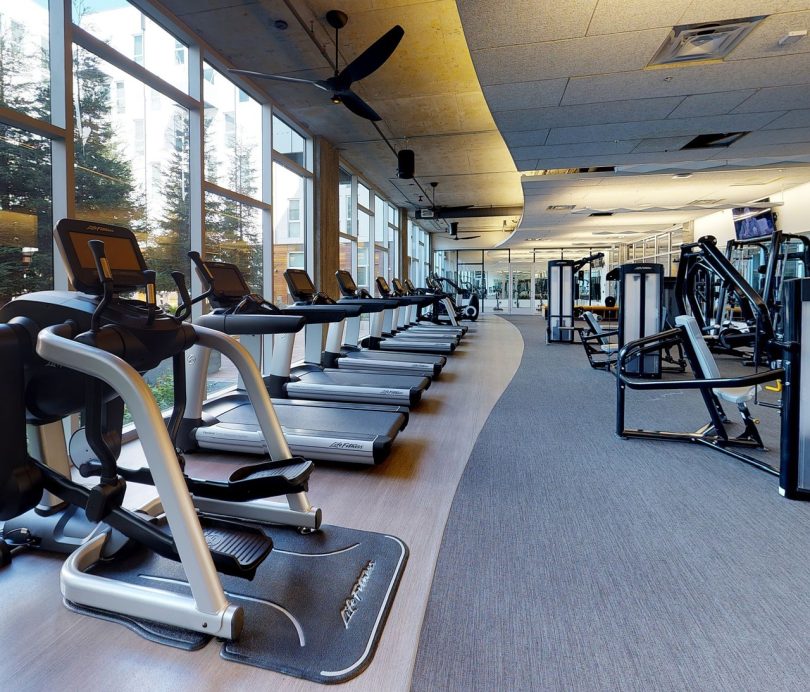Welcome to my article on maximizing your workout routine by incorporating the rower for low-impact exercise. As someone who was born in London and has been living in New York since the age of 20, I have always been passionate about fitness and finding new ways to stay active. In this article, I will share with you the many benefits of using a rowing machine, regardless of your age or fitness level, and how you can effectively incorporate it into your workout routine.
Protect Your Joints with Low-Impact Exercise
When it comes to exercise, it’s important to take care of our joints. High-impact activities, such as running or jumping, can put a lot of stress on our joints and increase the risk of injury. That’s where low-impact exercises like rowing come in. Not only does rowing provide a great cardiovascular workout, but it also minimizes the impact on your joints, making it a safer option for those with joint issues or those who want to prevent them.
The Benefits of Low-Impact Workouts for Joint Health
Rowing is a low-impact exercise that engages multiple muscle groups while putting minimal stress on your joints. This makes it an excellent choice for individuals with conditions such as arthritis or those recovering from joint injuries. Not only does rowing help build strength and endurance, but it also improves joint stability and flexibility. By incorporating rowing into your workout routine, you can protect your joints and maintain their health for years to come.
One of the key benefits of low-impact workouts, like rowing, is that they allow individuals with joint issues to stay active and maintain a healthy lifestyle. Many people with arthritis or other joint conditions often struggle to find exercises that don’t exacerbate their symptoms. High-impact activities can cause pain and discomfort, leading to a decrease in physical activity and a sedentary lifestyle. However, low-impact exercises, such as rowing, provide a solution to this problem.
Rowing is a full-body workout that engages various muscle groups, including the legs, core, arms, and back. Unlike high-impact exercises that put excessive strain on the joints, rowing uses fluid, controlled movements that minimize the risk of injury. This is particularly beneficial for individuals with joint issues, as it allows them to strengthen their muscles and improve their cardiovascular fitness without putting unnecessary stress on their joints.
Furthermore, rowing helps improve joint stability and flexibility. The repetitive motion of rowing helps lubricate the joints, reducing stiffness and promoting better range of motion. This is especially important for individuals with arthritis, as it can help alleviate pain and improve overall joint function. By incorporating rowing into your workout routine, you can enhance your joint health and reduce the risk of developing joint-related conditions in the future.
Another advantage of low-impact workouts like rowing is that they can be easily modified to suit different fitness levels and abilities. Whether you’re a beginner or an experienced athlete, rowing can be adjusted to meet your specific needs. You can control the intensity by adjusting the resistance on the rowing machine or by varying your rowing speed. This flexibility allows individuals with joint issues to start at a comfortable level and gradually increase the intensity as their joint health improves.
In conclusion, low-impact exercises like rowing offer numerous benefits for joint health. They provide a safe and effective way to stay active, build strength, and improve cardiovascular fitness without putting excessive stress on the joints. By incorporating rowing into your workout routine, you can protect your joints, enhance joint stability and flexibility, and maintain a healthy and active lifestyle. So why not give rowing a try and experience the positive impact it can have on your joint health?
Rowing: A Workout for Every Age
Rowing is a versatile exercise that can be enjoyed by people of all ages. Whether you’re a senior looking to stay active or a young adult wanting to mix up your workout routine, rowing has something to offer everyone.
Rowing for Seniors: Stay Active and Fit
As we age, it becomes increasingly important to prioritize our health and fitness. Rowing is an excellent low-impact exercise for seniors, as it provides a full-body workout without putting excessive strain on joints. By incorporating rowing into your fitness routine, you can improve cardiovascular health, build strength, and maintain flexibility. It’s never too late to start rowing and reap the benefits of a healthier, more active lifestyle.
One of the great things about rowing is that it can be tailored to suit individual needs and abilities. Seniors who may have limited mobility or physical limitations can still benefit from rowing by using modified equipment or techniques. For example, rowing machines with adjustable resistance levels allow seniors to start at a comfortable intensity and gradually increase the challenge as they become stronger and more confident.
In addition to the physical benefits, rowing also offers mental stimulation and social interaction. Many rowing clubs and community centers offer programs specifically designed for seniors, providing a supportive and inclusive environment. Participating in group rowing sessions can help seniors stay motivated, make new friends, and maintain a sense of belonging.
Furthermore, rowing can be a great way for seniors to enjoy the outdoors and connect with nature. Whether rowing on a calm lake or along a scenic river, the peacefulness and serenity of the surroundings can enhance the overall experience and contribute to a sense of well-being.
It’s important for seniors to consult with their healthcare provider before starting any new exercise program, including rowing. They can provide guidance on how to safely incorporate rowing into their fitness routine and ensure it aligns with any specific health considerations or limitations.
Getting Started with the Rowing Machine: A Beginner’s Guide
If you’re new to rowing or the rowing machine, don’t worry – I’ve got you covered. In this section, I’ll walk you through the basics of rowing machine usage and provide helpful tips to get you started on the right foot.
Rowing is a fantastic full-body workout that engages multiple muscle groups simultaneously. Not only does it provide a great cardiovascular challenge, but it also helps build strength and endurance. The rowing machine, also known as an ergometer or erg, is a popular piece of equipment found in most gyms. It simulates the motion of rowing a boat, making it an excellent choice for those looking to add variety to their fitness routine.
Rowing Machine Basics: Proper Technique and Form
Before hopping on the rowing machine, it’s essential to learn proper technique and form to maximize your workout and prevent injury. Start by sitting on the rowing machine with your feet secured in the straps and your knees bent. This position ensures stability and allows for a full range of motion.
Once you’re seated, grab the handle with an overhand grip, keeping your arms extended in front of you. It’s crucial to maintain a relaxed grip, avoiding excessive tension in your hands and forearms. This grip allows for a smooth and fluid movement throughout the rowing stroke.
Now that you’re ready to begin, engage your core and push off with your legs, extending them fully. The power in rowing comes from your legs, so make sure to drive through your heels and use your glutes and quads to generate force. As you straighten your legs, lean back slightly and pull the handle towards your chest. Focus on keeping your back straight and your shoulders relaxed. This position engages your back muscles, particularly your lats and rhomboids.
Once you’ve completed the pull, it’s time to reverse the motion. Extend your arms, leaning forward, and bending your knees. This movement allows you to return to the starting position smoothly. Remember to maintain control throughout the entire stroke, avoiding any jerky or sudden movements.
As you become more comfortable with the rowing machine, you can start increasing the intensity of your workouts. Experiment with different resistance levels, stroke rates, and workout durations to challenge yourself and keep things interesting. It’s also a good idea to incorporate interval training, alternating between high-intensity bursts and recovery periods, to further enhance your fitness gains.
Lastly, don’t forget to cool down and stretch after your rowing session. This helps prevent muscle soreness and promotes flexibility. Stretching your hamstrings, quadriceps, back, and shoulders can be particularly beneficial.
So, whether you’re looking to improve your cardiovascular fitness, build strength, or simply try something new, the rowing machine is an excellent choice. With proper technique and consistency, you’ll be well on your way to achieving your fitness goals. Happy rowing!
Rowing for Strength: Building Muscles with Every Stroke
While rowing is often associated with cardio, it’s also an excellent way to build strength and tone your muscles. The repetitive motion of rowing engages various muscle groups, including your back, legs, arms, and core.
How Rowing Can Help You Build a Stronger Body
Rowing is a full-body exercise that targets both large and small muscle groups. The leg drive requires power from your glutes, quadriceps, and hamstrings, while the rowing motion engages your back, shoulders, and arms. Additionally, rowing strengthens your core muscles, as they are essential for stability and maintaining proper form. By incorporating rowing into your workout routine, you can build strength, improve muscle definition, and achieve a balanced physique.
Adding Variety to Your Workout: Incorporating Rowing
Are you tired of the same old workout routine? Looking to add some excitement and challenge? Incorporating rowing into your fitness regimen can be a game-changer.
Cross-Training with Rowing: A Full-Body Workout
Rowing is a fantastic cross-training activity that can complement a variety of other workouts. Whether you’re a runner, cyclist, or weightlifter, rowing can help improve your overall fitness and performance. By incorporating rowing into your routine, you’ll engage different muscles and challenge your body in new ways. This variety will not only prevent boredom but also enhance your overall strength, endurance, and cardiovascular fitness.
Ready for a Rowing Challenge? Let’s Dive In!
Once you’ve become comfortable with basic rowing techniques, it’s time to take your workouts to the next level. In this section, I’ll share some advanced rowing workouts that will push your limits and help you achieve new fitness milestones.
Advanced Rowing Workouts for Experienced Rowers
If you’re an experienced rower looking for a challenge, try incorporating high-intensity interval training (HIIT) into your rowing routine. HIIT involves alternating between periods of maximum effort and short recovery periods. This type of training can greatly improve cardiovascular fitness, increase calorie burn, and enhance overall performance. Experiment with intervals of different lengths and intensities to find a routine that works best for you.
Warming Up for a Successful Rowing Session
Before any workout, it’s crucial to warm up your body properly to prevent injuries and maximize performance. Here, I’ll share some tips on how to warm up effectively before a rowing session.
Preparing Your Body for an Effective Rowing Workout
Start your warm-up with some dynamic stretches to activate your muscles and increase joint mobility. This can include exercises like arm swings, leg swings, and torso twists. Next, hop onto the rowing machine and row at a low intensity for 5-10 minutes to gradually increase your heart rate and warm up your muscles. You can also incorporate short bursts of higher intensity rowing to further elevate your heart rate. Finish off with some static stretches to cool down and improve flexibility. By properly warming up, you’ll reduce the risk of injury and ensure a successful rowing session.
15 Minutes to a Cardio Blast: Rowing for Heart Health
Incorporating rowing into your workout routine is an excellent way to improve cardiovascular fitness and promote heart health. Don’t have a lot of time? No problem! In this section, I’ll show you how to get a cardio blast in just 15 minutes.
High-Intensity Interval Training on the Rowing Machine
HIIT workouts on the rowing machine are an efficient way to boost your heart rate and burn calories in a short amount of time. Begin with a 3-5 minute warm-up, then alternate between 30 seconds of maximum effort rowing and 30 seconds of active recovery rowing at a lower intensity. Repeat this cycle for 10-15 minutes, aiming to maintain a fast and consistent pace during the high-intensity intervals. Finish your workout with a 3-5 minute cooldown to gradually bring your heart rate back to normal. This quick and intense rowing session will leave you feeling energized and help improve your cardiovascular fitness.
As you can see, incorporating the rower into your workout routine can offer numerous physical and cardiovascular benefits. Whether you’re looking to protect your joints, build strength, add variety to your workouts, or enhance your cardiovascular fitness, the rowing machine has something to offer everyone. So why not give it a try and start maximizing your workout routine today!








